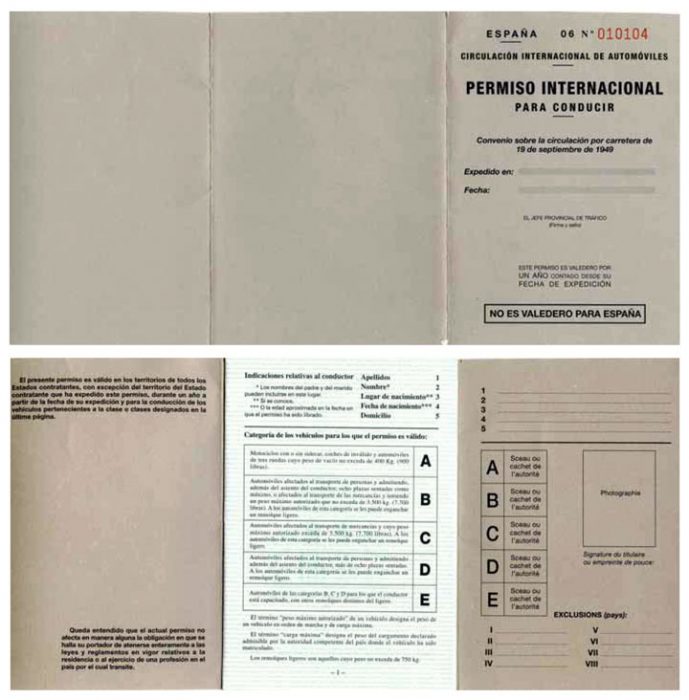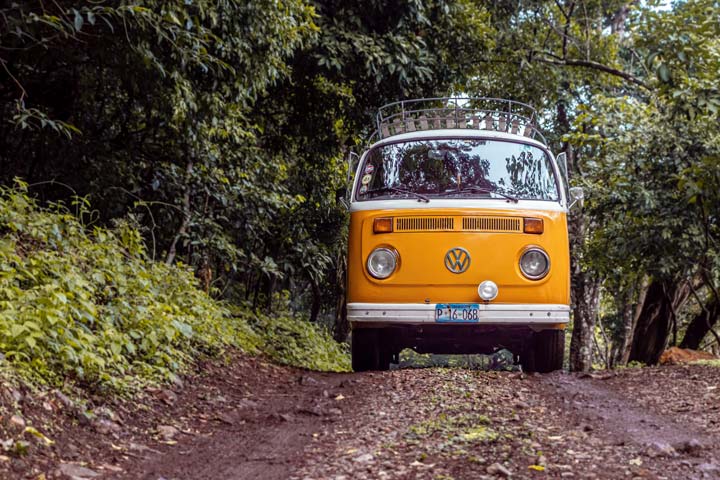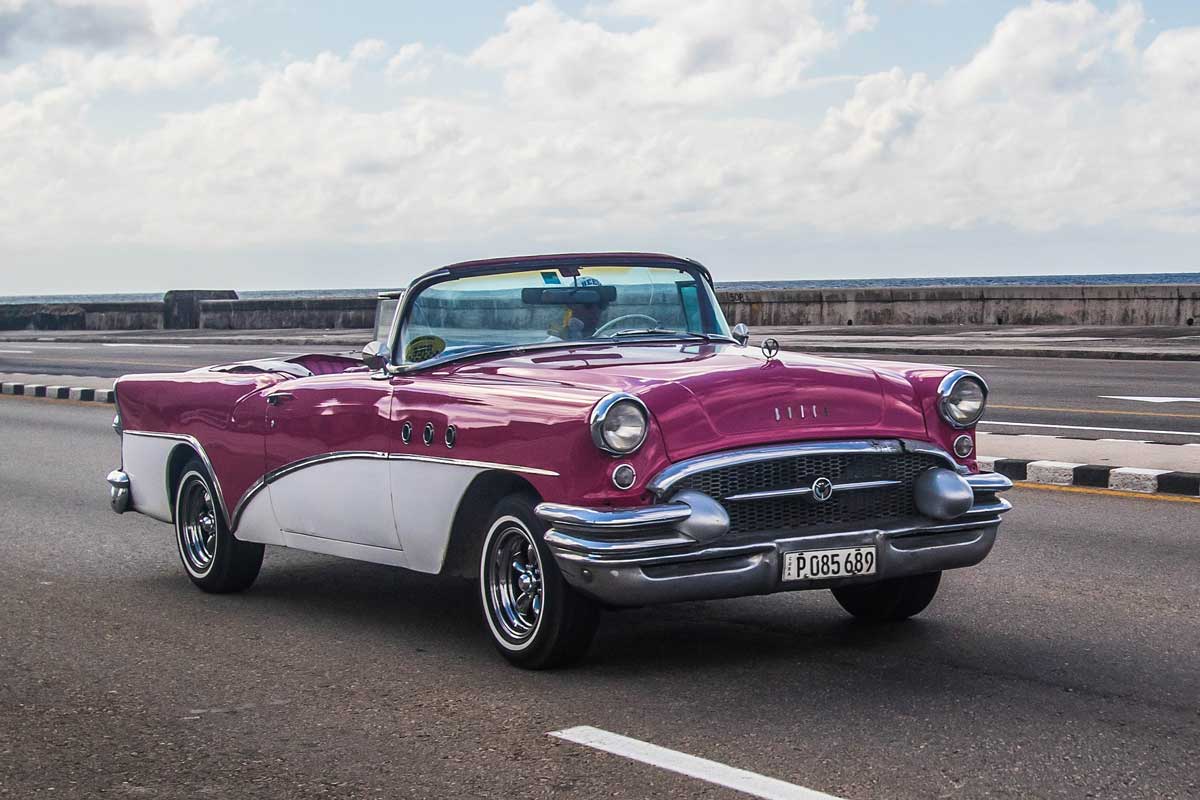This post is also available in:
 Español
Español
One of the best ways to get to know a country, whether travelling solo or with someone else, is on the road. Being able to drive by ourselves allows us to reach a lot of places we never even knew existed and that aren’t easily accessible otherwise. However, we know driving in a foreign country can sometimes feel intimidating or even dangerous. That’s why we decided to write this post, to provide future road travelers with all the information they need to know to drive safely and confidently in Latin America.
Best and worst countries to drive in Latin America
Chile, Mexico and Argentina are considered the best countries to drive in Latin America due to the great state of their roads, their traffic optimization and their respectful drivers. Buenos Aires specifically, in Argentina, is considered one of the best cities in the whole Latin America to drive in because of its infrastructure.
On the other hand, Panama, Guatemala and El Salvador are among the worst countries to drive in, due to lack of traffic signs and high traffic volume. We also wouldn’t recommend driving in Bogota, Colombia, due to the aggressive style of their drivers (or, at least, that’s what Mister Auto said in their 2019 driving index). You can always escape to the Lost City of Colombia if traffic is getting under your skin, where you won’t find any aggressiveness (or cars).
This is how we imagine Bogota drivers look like 😜
As happens everywhere, though, it all depends on the area, the current situation and the individual experience of each driver, so don’t worry too much about it if the country or city you were planning to visit is among the worst of Latin America. Don’t give up yet! You might still enjoy driving in these places, you’ll just need to be determined and be extra careful to avoid the worst traffic areas when driving.
Can I use my regular driving license in Latin America?
Latin American countries have bilateral agreements with many countries, including most European countries, to allow their citizens to use their national driving licenses in the other country. Just check your country’s embassy in the country you’re planning to visit. Chances are, your regular driving license will be enough for a touristic trip. If you’re staying long term (typically, any longer than 3 months), check the regulations, because you might need to get a local license.
If your country doesn’t have an agreement with the country you’re planning to visit, or if you just want to make sure you’ll be able to drive there, you can get an international driving permit from the organization in charge of expediting driving licenses in your country. The international driving permit allows you to drive virtually anywhere in the world, and is valid for a year.

Yes, it looks like an old driving license, but this is the current international driving permit Spain expedites (other countries will expedite similar ones). Since it is basically a small booklet that translates our license in 8 different languages, we’ll need to also carry our regular license and passport for it to be valid.
How to rent a car in Latin America
In Howlanders, as conscious travelers, we believe we should strive to support the local economy of the countries we visit as much as possible. However, it is also very important to stay safe and make sure we’re renting a car from a trustworthy company. To do this, we have several options:
- Renting a vehicle from a well-known, international company like AVIS or Hertz, which might give us a bigger sense of security. This is probably the best option for travelers who don’t speak Spanish, since international companies are more likely to be able to help us in English or any other language.
- We can also look for Latin American companies, just being careful to choose a trustworthy company (Google is your friend – read as many reviews as possible, from different websites if available).
- Last one, we can wait until we reach our destination to go to the car rental in person. We only recommend this last one if there is alternative transportation available to you – for example, public transportation – and always being careful and making sure we know what we’re getting.

Renting a vehicle gives us the freedom to travel without depending on public transportation, but it also has some limitations. For example, many car rental companies charge extra if we want to return our car to a location other than where we picked it up, or if one of the drivers is under 25 years old, and it’s usually not very easy to cross borders on a rental car, if it even is allowed. All of this depends on the country, the car rental company and the package we buy, so we’ll say it again: make sure you know what you’re getting!
If you’re planning to visit more than one country on your trip, but you can’t find any car rental company that allows you to cross the border with their vehicles, don’t give up yet: there are alternatives. Depending on the specific border you want to cross, there might be a train or bus that allows you to cross easily and comfortably.
If this is not an option, you can always take public transportation or a taxi to the border, cross on foot and take public transportation or a taxi to your next destination. Remember to make sure you have all the necessary documentation to cross the border! Once you’ve reached your destination, you can rent a car there to continue your trip in the new country.
What are traffic signs like in Latin America
Unlike Europe, where most traffic signs are the same in every country, in Latin America traffic signs may vary from country to country and some are significantly different to European traffic signs. One of the best known examples of this is the STOP sign; in most Latin American countries, this sign says PARE (stop in Spanish), although in some countries. like Panama, it says ALTO (also meaning stop in Spanish). However, they are still quite easily recognisable, since they have the same red color and octogonal shape.

Generally speaking, traffic signs in Latin America are very similar to the ones in the United States, and their meaning varies according to their color:
- Green signs: they inform us about distances, places and directions related to the road we’re driving in.
- Brown signs: they inform us about nearby natural landmarks such as forests, national parks or historical landmarks.
- Blue signs: similar to European blue signs, they inform us about roadside rest areas, refuelling stations, accomodations, convenience stores or restaurants.
- White signs: they warn us about road regulations like speed limits or no parking allowed. White signs can also be used in roads under construction together with warning lights or in fluorescent yellow.
- Orange signs: they indicate temporal detours and other traffic events.
- Yellow signs (non-fluorescent): they warn us about immediate dangers on the road like abrupt turns, changes of gradient or school zones.
There are bad drivers everywhere, but traffic signs in Latin America tend to be considered suggestions rather than strict rules like in Europe or the US. Therefore, apart from paying attention to traffic signs and road regulations, it’s very important to pay extra attention to other drivers and not obstruct the traffic, especially in higher traffic areas.
Other tips for driving in Latin America
Finally, we wanted to give you some general tips that we think will be very useful for any trip abroad where you’ll be driving.
- Avoid cities. Seems obvious, but a lot of tourists rent cars to drive around urban areas where they don’t really need them. Usually cities are easy to walk around, and public transportation can take you anywhere. Avoiding driving in cities doesn’t only help the environment, it’ll also help us enjoy our trip more, since driving in most urban areas is usually stressful, especially in places we don’t know too well.
- Avoid peak hours if you do need to go in or out of the city by car. Peak hours vary from city to city, but 10 am to 12 pm is usually a safe time, and anytime after 6 pm.
- The weekend is also a good time to drive around urban areas, since traffic is usually calmer.
- Be careful with unpaved and dirt roads. Even though Latin America has great roads and highways, on pair with any other road in major cities worldwide, there are also many rural areas that are only accessible through dirt roads, so if you’re planning to travel through rural areas make sure your vehicle is suitable for these roads.
- Refuelling stations are also not common in many rural areas, so be careful with your fuel level and plan accordingly to avoid running out.

Last but certainly not least: enjoy your trip! Driving in Latin America involves a lot of planning and extra precautions but we know it’s so worth it!
What about you, have you ever been on a road trip? What’s your next destination?






